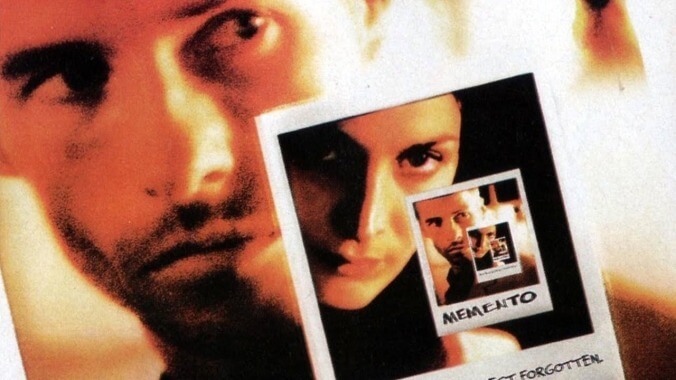How Memento gave its audience short-term memory loss

Seventeen years ago, Memento introduced a wide audience to the mind-bending storytelling techniques that have become synonymous with Christopher Nolan’s films. Though, for some reason, Memento isn’t remembered as fondly or as reverently as the other films in the director’s oeuvre. More often than not, audiences look back on the film as one extended gimmick—a story that’s made more interesting due to the fact that it’s told backwards. But in the latest installment of Lessons From The Screenplay, we see that what could potentially be dismissed as gimmickry is actually an impressive feat of filmmaking that keeps the audience simultaneously engaged and confused, just like the film’s protagonist.
While writing the film, Nolan struggled to come up with a way to “give the audience the experience of not being able to remember things,” so they would see the world from the perspective of Guy Pearce’s character, Leonard, who suffers from anterograde amnesia. By structuring the movie as a series of scenes told in reverse order, the audience members start each new scene in a state of confusion (just like Leonard), but as the scene plays out, they are given clues and context for the scene that immediately preceded it, which chronologically took place after it. All of this results in a film in which each successive scene not only provides answers to small questions like “How did he get here?” or “When did he take that Polaroid?” but also seeds in clues for larger questions like “Why did he kill Teddy?” and “Who is John G?”
Knowing that an entirely backwards movie would get tedious, Nolan uses a series of black-and-white scenes told in chronological order as a backbone for the film. These scenes provide backstory for our main character while giving the audience something to ground themselves with while being continuously thrown 10 to 15 minutes back in time. So, in reality, Memento is more than a film told backwards. It’s half a film told backwards and half a film told forwards that somehow meets in the middle, which is actually at the end. As the video says, “The fact that the film makes as much sense as it does is a very impressive feat.”